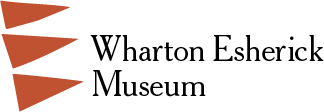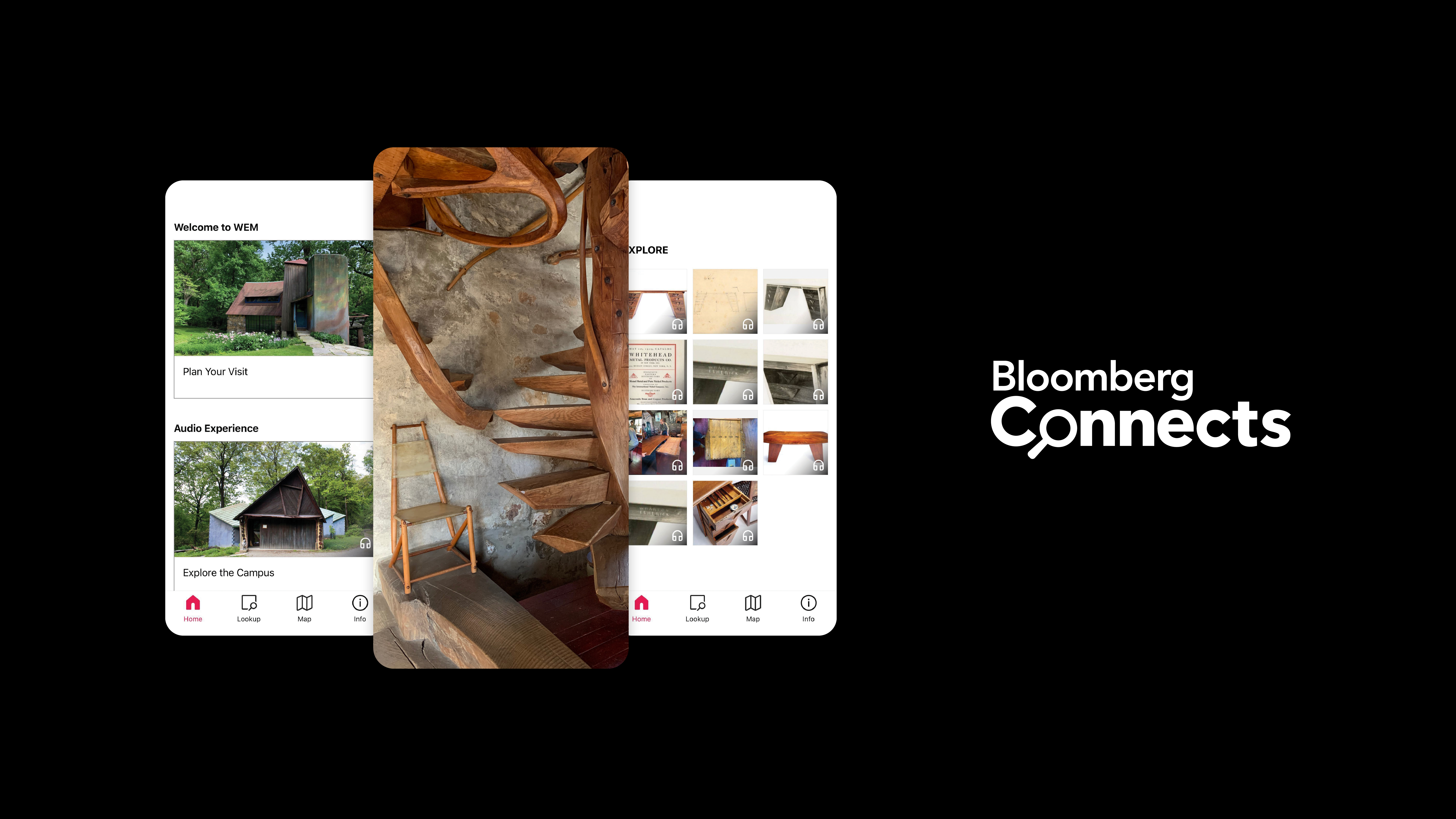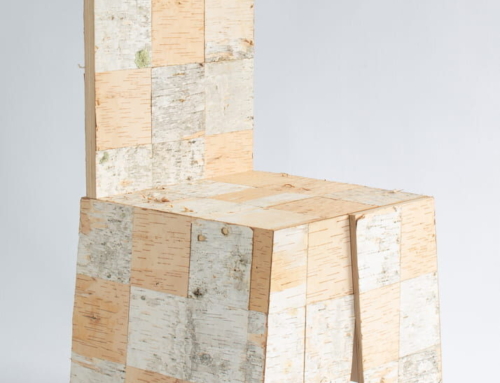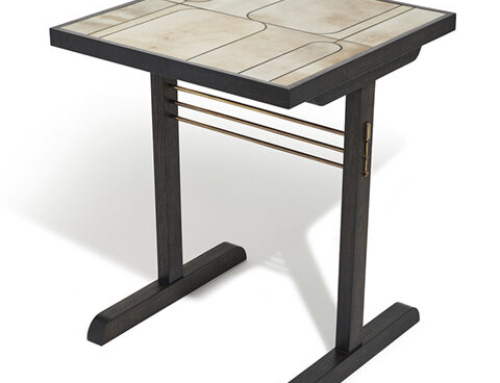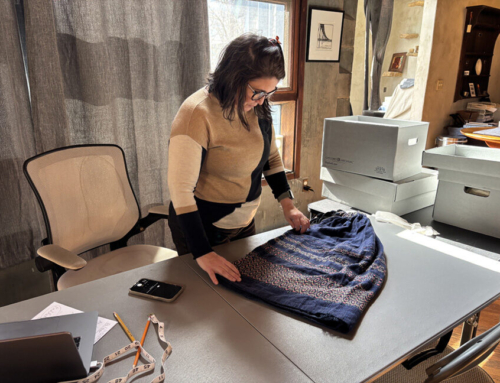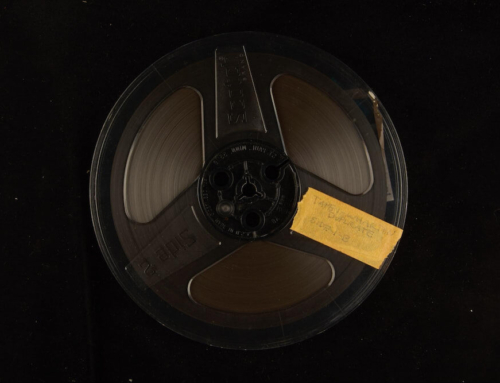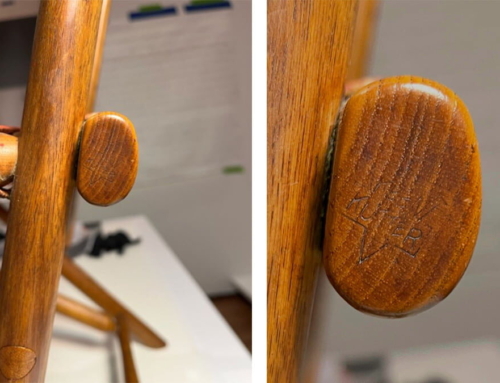This month’s Note From the Studio is a recorded conversation with members of our staff about our recently launched digital guide. You can listen to our full conversation in the clip below! Following the recordings is a lightly edited transcript of the audio.
PAUL: Hi! I’m Paul Deichmann, manager of Tour Programs and a Museum Educator here at WEM, and I helped build our new digital guide on the Bloomberg Connects App.
For this Notes From the Studio, I wanted to share with you a bit about the process, purpose and future of that guide, which we launched in December.
l started working at the Wharton Esherick Museum in March [of 2024]. And right away I noticed, as a person living in the 21st century, that we didn’t really have a digital experience that felt satisfying. This wasn’t that surprising to me: as anyone who comes here knows, the experience is deeply physical. The relationship to the small space, the rounded edges of the surfaces, it’s all part of the unique experience that is Wharton’s home and studio. A home and studio that is a small, historic space. Our limitations are part of our charm, but also are limitations that, well, limit us. For that reason, and for others, I wanted to know, do we even want to have a digital guide?
KATIE: Of course every museum wants to have a space in the digital world.
PAUL: That’s Katie Wynne, our Deputy Director of Operations & Public Engagement– she handles how we communicate with the world. She in her work here at WEM had been considering the Bloomberg Connects app as an option for us for some time.
KATIE: I think one of the things that’s unique about us is our scale. The nature of visiting is that you’re on this guided tour–so if you want to see this museum (and we want everyone in the world to see it)…. eight people at a time. The basic math just doesn’t get that many people through the building.
PAUL: About how many people do we get through each year?
KATIE: We’re very roughly around 5000 visits a year. Obviously a digital guide really allows us to reach and engage that much more with people. Another aspect of that is the nature of the site as a place that is very challenging for people with mobility issues so we see the guide as really a way to offer some access because we can’t make changes to the historic site. We can find these other avenues to get people to feel like they’re able to engage with space.
PAUL: And we have some ways we already do this, beyond this guide we developed. We’ve tried before, essentially. What other digital presences have we tried, and what was going to be special about the Bloomberg App for us?
KATIE: Obviously things like social media are ways that we do that–many museums do. We’ve tried a couple things that were more specifically ways to virtually get people in the building.
We have something on our website now that’s called a Matterport Tour, and it is a great feature in its own right, but it’s not interpretive in the way that the Bloomberg app is. So it’s more of these platforms where you step virtually into a space and you’re… a little …I don’t know if avatar is quite the right word… but you are navigating left and right sort of first person, video game sort of tone.
And what happens when we did this for the museum is that the building that Esherick made, which has multiple levels in a sort of treehouse height (you know, things at different heights, there’s a sculpture well) nothing about the format of the studio translated to the Matterport in a seamless way. So, it’s still a nice resource that we have on the site, but it really doesn’t feel as easy to navigate as we would like. And the other side of it is it’s not really formatted to be an interpretive guide, which the Bloomberg app is.
PAUL: Would you say more about that? What do you mean by an interpretive guide?
KATIE: We’re able to really build out a collection or a guide or things that are packaged as something that you can kind of move through and glean something from, rather than just sort of wander (as it would be in some of the other tools that are out there).
And I would say also, about the Bloomberg app in particular, is that they are providing so much of the, well the whole platform itself, and all of the expenses that would’ve gone into having to make our own app. And then had we made our own app, we would not be connected to all these other cultural institutions across the country. So it really is such a leg up to be just instantly added to this network of other other groups and the amazing support that they give and being able to help us understand how to build in the app and how to use it. And of course it’s well designed so it’s very user-friendly, it’s very easy to look at. It has all of those great qualities baked into it already.
Developing the Content of the Guide
PAUL: So, in early Autumn, with all those reasons compelling us, we launched into the process of building the guide in Bloomberg Connects, which would be a piece of active interpretation, to guide folks whether they were here on site or not.
And that doesn’t mean we knew what exactly was going to be in the app. Essentially, we knew the why of our digital guide, but we hadn’t yet begun to tackle the next question, which is “what will this digital guide have in it?”
HOLLY: So the digital guide we were not so much creating a new tour as we were reinterpreting torn material that we already have.
PAUL: That’s Holly Gore, Director of Interpretation and Associate Curator of Special Collections. Holly developed our interpretative framework for tours, and developed the general sketch of what we’d need to make the tour complete.
HOLLY: And what we decided to do is to have different people on the museum staff each kind of take a station and talk about the things that they ordinarily talk about when they are giving tours.
PAUL: And that really speaks to one of the ways the digital guide is really different from a physical tour of the space.
HOLLY: On the digital experience you don’t need to have ten people in the same room in order to have ten voices, so we have the benefit of having one of each person‘s take on the site–whether if someone is an artist or a an artist, art historian or curator or woodworker or what not–you get all of those different perspectives in the digital guide.
PAUL: For you Holly, were there any surprises in preparing the digital guide?
HOLLY: I think just hearing everyone’s take and seeing how different they are. I’ve always been very aware that we come at this material from different perspectives, but hearing them all together and how rich that could be when you have all those voices put together was surprising.
PAUL: And I think you did a great job encouraging everyone to just speak as they usually do, to preserve their natural quality of sharing this story.
HOLLY: Yeah, I think there’s a different thought process that goes on with speaking rather than writing. I was really happy that for this digital guide we were able to preserve a lot of that by asking people to talk about the things that they always talk about and know very well.
PAUL: How did you preserve that in your section of the guide? You just know so much, it must be hard to narrow it down.
HOLLY: I just turned on the dictation function in Microsoft Word and spoke into it and then, because the sound clip had to be very short, I did some editing in order to tighten things up, but really didn’t change much otherwise.
PAUL: Don’t sleep on that dictation function, folks.
PAUL: What we ended up putting together is a guide of the exterior: the buildings and the story behind them. We found that was going to be the most useful for us and for our visitors. The end result is approximately 30 minutes and is a tour you can mostly see from one place on campus, but using all these different voices and perspectives that really make the Wharton Esherick Museum what it is today.
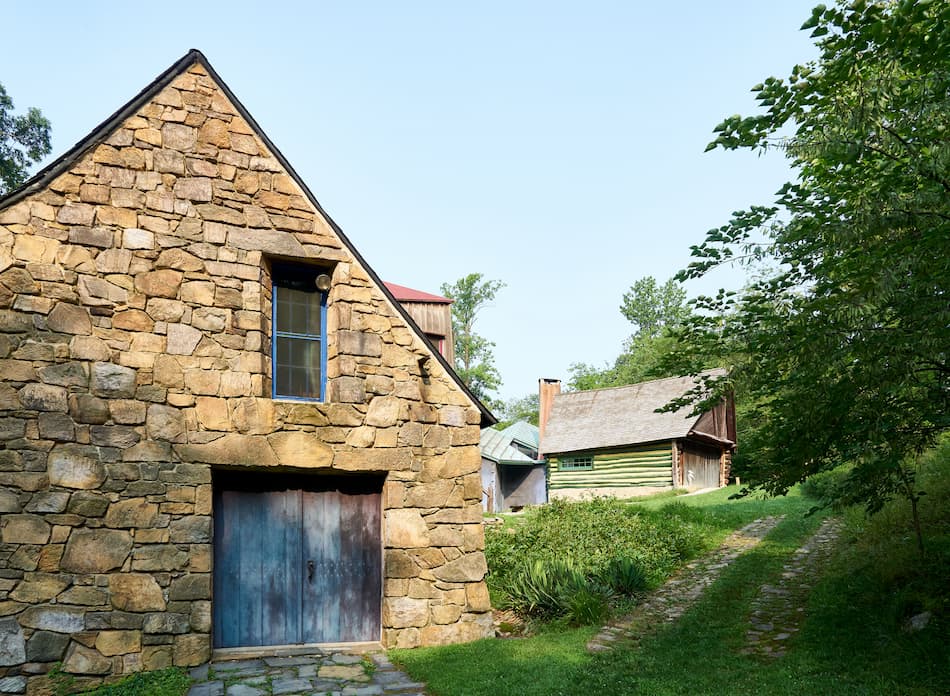 Wharton Esherick Studio and Garage. Photograph by Joshua McHugh.
Wharton Esherick Studio and Garage. Photograph by Joshua McHugh.
Wharton’s Voice in the Guide
So the guide ended up not just having all these wonderful voices from the staff of WEM, but also has Wharton’s voice itself. One of the most delightful moments for me in making the guide, as someone who loves audio, was spending time with WEM’s audio archives. Bob Bascom interviewed Wharton in 1968 on reel-to reel-tape, getting the story of his life. Here’s a clip from the a top on the digital tour, where I am talking about the building of the 1926 studio, with a clip of Wharton talking about it as well:
PAUL: To build the Studio, Wharton works with a man by the name of Albert Kulp, who is a specialist in these Pennsylvania bank barns. He goes by Bert for short. Because he loves the color and shape of the stones, he instructs Bert:
Wharton: I said to Bert, I said, “I don’t want you to put a hammer on the face of any stone I have.” It’s been lying up in the woods so long it had a beautiful color on it.
PAUL: This brings him into tension with Bert, because as Wharton would say:
Wharton: See, a mason wants to make everything square. All of the stones are square, and they go up one course, and they’re all square again, then go up the next course.
PAUL: And Bert comes to Wharton, and he says, “Please let me cut them.”
Wharton: [Bert says:] “Can’t I just cut that top off of there?”
I said, “No, Bert, we’re not going to cut that top off. That stone’s going to be a triangle stone.”
“Oh, it would be so much easier for me to put the next course right on top.”
I said, “No, Bert, we’re not going to cut.”
“What am I going to do? Suppose I have to put some little ones in.”
I said, “Put them under.”
And Bert’s expression was, “Well, it’s going to look like a hen with a lot of chickens around it.”
I said, “All right. Well, it’ll look like a hen with a lot of chickens. That’s alright. That’s alright by me.”
PAUL: As we develop the digital guide, we’ll be adding sections for Wharton’s bedroom, for the other interiors, and for the Diamond Rock Schoolhouse, which is part of our collection but is quite difficult to share with the public.
These are exciting times at WEM, and we’re so glad you’re here with us. I hope you enjoy the digital guide, and all the resources that will come through it.
Post written and recorded by Museum Educator/Tour Program Manager Paul Deichmann
January 2025
